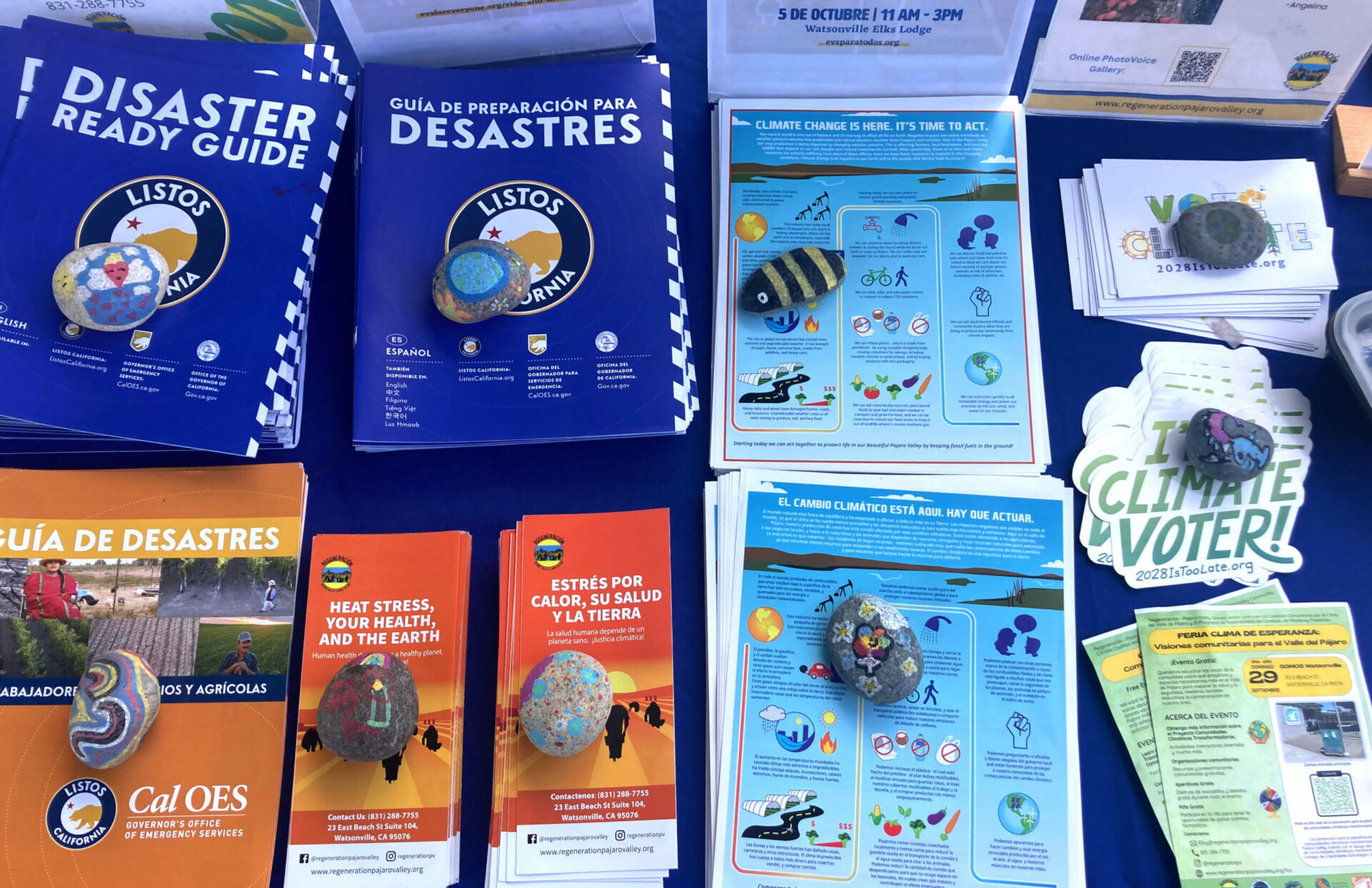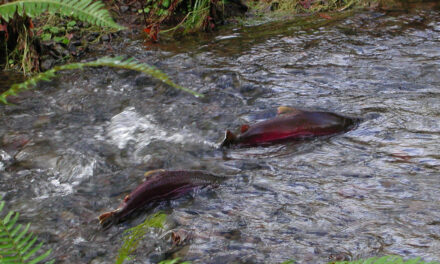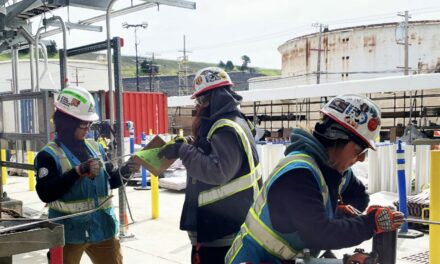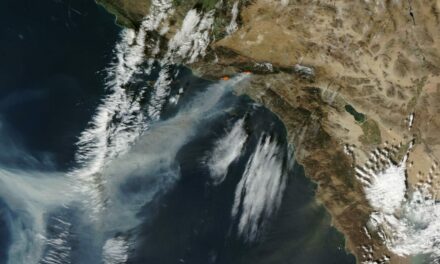Pajaro Residents Weigh In on How to Use Climate Funds
As his mother chats about housing costs, the stroller-bound baby watches the next table over, where a flour tortilla is folded over into a quesadilla atop an electric cookstove. They’re among the first attendees of the three-hour Climate of Hope Fair in Watsonville, an event organized by the nonprofit Regeneración Pajaro Valley in late September for the agricultural community on the Central Coast to learn and share ideas for allocating climate funds from the California Strategic Growth Council.
People filtering into the room spin a wheel which lands on one of a dozen conversation starters, from energy costs to park access to transportation. The staffer at this station takes notes on large sheets of paper taped to the walls. As the afternoon progresses, she has to add more sheets of paper as popular topics fill up. Talking to folks at the event, she often draws on examples from Mexico to help jog people’s ideas, like public combis (cheaper, van-like local buses), or mixed-use zoning where corner stores and neighborhood housing blend together.
The event is prepared to welcome everyone: a volunteer supervises children while they play and color so their parents can roam; a food stand offers complimentary potato flautas next to ruffled greens, bright and oddly shaped bell peppers, and other assorted veggies in crates, which a volunteer proudly tells me are free to take home.
Eventually, the woman and her son are directed towards tables with hand-drawn maps of both Watsonville and Pajaro, where they’re encouraged to add sticky notes to exactly where in their neighborhoods they want to see changes. Anyone who visits all the stations for discussing community climate ideas with Regeneración staff can enter a raffle, for prizes like air purifiers, electric tea kettles, spindly fruit tree saplings, and a two-burner cooktop paired with oven mitts.
“It’s not just about the climate, but also about violence,” a middle-aged man says in Spanish. He wears a Driscoll’s baseball cap and is accompanied by another man and two women, who say that the most impressive thing they’ve seen at the Climate of Hope Fair is a drone to monitor air quality in the fields in real time for farmworkers. The group says that they typically wait for a certain time interval after spraying before re-entering the fields, but that the drone’s analysis would give them more confidence that it’s really safe for them to return to work tending the strawberries and other produce the region is famous for, post-spray or when wildfire smoke clogs the air.
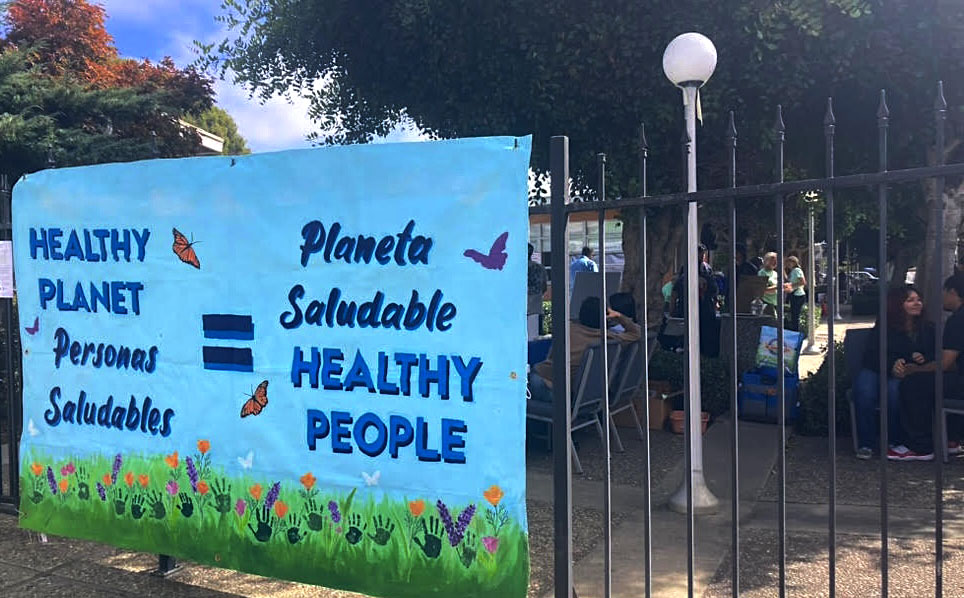
Climate Fair signage. Photo: Sierra Garcia
The event’s welcome booth, staffed by high schoolers, is adorned with dozens of professional stickers, flyers, and pamphlets, all in both English and Spanish. Many of the booths showcase connections between climate change and other issues — safety for farmworkers in the fields and kids in the streets, health, the high cost of living. Residents and workers in the area have battled through many of California’s extremes, including heat, fire, smoke, and heavy rainfall that breached a levee and flooded the town of Pajaro. But for many, more immediate needs remain top of mind.
“A lot of times, especially here in immigrant communities, we are focused on other things,” says Andrew Valepxia, a local high school senior volunteering for the event. “Like our jobs, and our relationships, and…”. He pauses, and the other volunteer, a young woman who asked not to be quoted by name, chimes in: “It [climate] isn’t a priority. There’s other struggles.”
Valepxia agrees.
In climate advocacy, “it can be sometimes very isolating, feeling like you’re the only voice,” he says. “But once you do take that first step and you see that there is this bigger community, you know that you’re being part of something. And I think that really helps.”
Regeneración plans to organize another event for community feedback in the spring, before presenting the consolidated report by the summer of 2025. The ultimate goal is for funding to go to climate projects that community members need and care about.
Series funded by the CO2 Foundation.
Other Recent Posts
Learning the Art of Burning to Prevent Wildfire
In Santa Rosa’s Pepperwood Preserve, volunteers are learning how controlled fires can clear out natural wildfire fuel before it can spark.
Martinez Residents Want More Than Apologies — They Want Protection
After a 2022 release of toxic dust and a February 2025 fire, people in the northeast Bay town are tired of waiting for safety improvements.
Weaving Fire Protection Out Of What’s Already There
A new Greenbelt Alliance report shows how existing vineyards, grasslands, and managed forests can slow wildfire and save vulnerable homes.
Fall Plantings Build Pollinator Habitats in Concord
Community groups, climate advocates and a church are coming together to plant pollinator gardens as monarchs, bees see population declines.
Newark Needs Housing, But Could Shoreline Serve A Higher Purpose?
The Bay Area needs more affordable housing, but would 196-homes or a buffer against sea level serve local needs better in the years ahead?
Who Will Inherit the Estuary? Training for a Rough Future
The six-month program teaches students aged 17 -24 about the challenges facing communities around the SF Estuary, from Stockton to East Palo Alto.
Split Verdict Over State of the Estuary
Habitat restoration and pollution regulations are holding the Bay steady, but the Delta is losing some of its ecological diversity, says SF Estuary Partnership scorecard.






